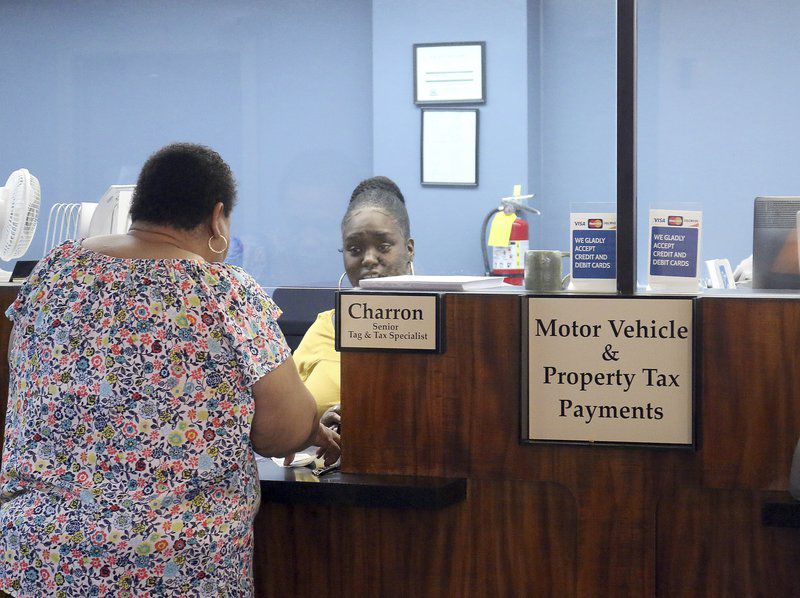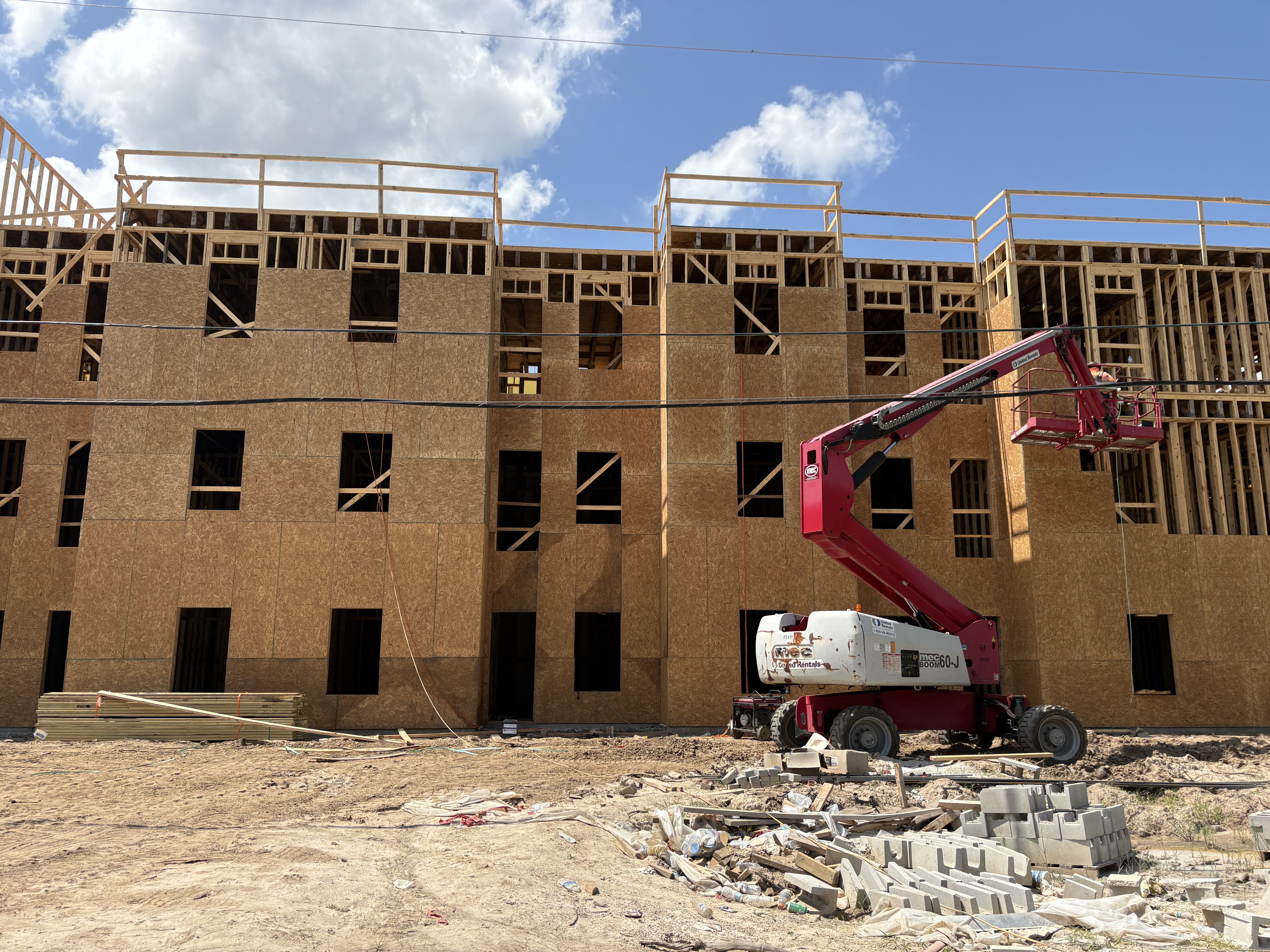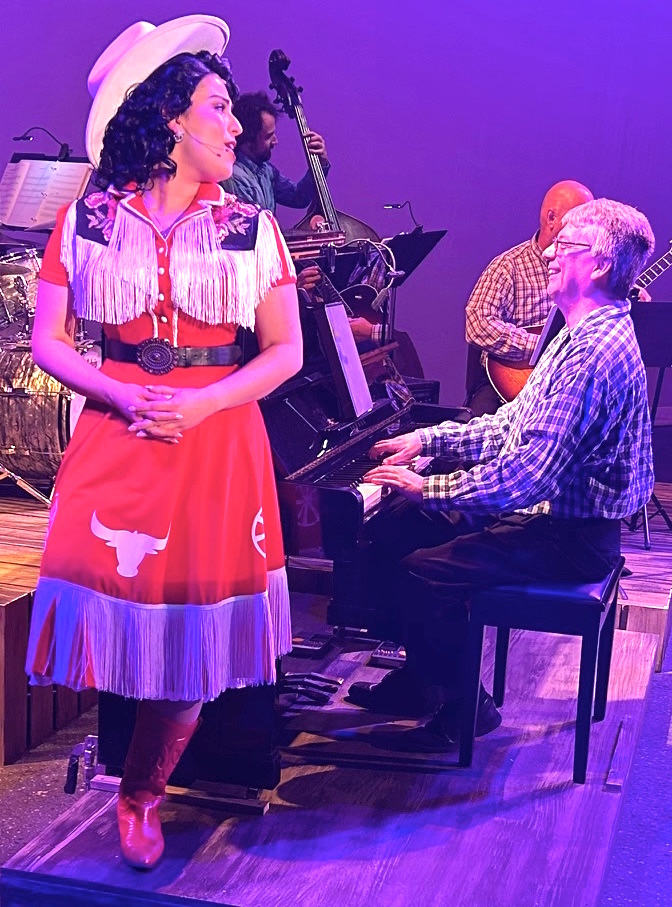TAXED: Getting mileage out of millage rates
Published 3:00 am Sunday, September 16, 2018

- Derrek Vaughn | The Valdosta Daily Times
VALDOSTA — A proposed tax increase will draw people to government meetings.
Such a proposal attracted public attention during a Valdosta City Council meeting Aug. 23, when a crowd of people showed up to stand against higher taxes.
Trending
Normally, less than a handful of residents might attend a regularly scheduled meeting.
However, during the meeting and two previous public hearings, several city residents voiced outrage the city would budget more expenditures than expected revenue. Other residents pleaded for the city to show mercy by not raising taxes on people already struggling to make ends meet.
The situation turned even more chaotic when the city-proposed property tax increase failed to garner enough council votes to pass.
Then, two freshmen council members proposed a larger tax increase, which would have balanced the city’s budget. Their motion failed.
Leaving only one more option. Maintain the status quo by neither increasing nor decreasing property taxes, leaving the city nearly $300,000 in the hole.
Cities, counties and school boards throughout the SunLight Project coverage area – Valdosta, Thomasville, Tifton, Dalton, Moultrie and Milledgeville, Ga. and Live Oak, Fla. – go through something similar to these events every year when they have to set their respective millage rate.
Trending
A millage rate is a tool for calculating local property taxes.
Rates fluctuate from the high end of 18.756 for Whitfield County Board of Education to the lowest rate of zero for the City of Thomasville.
City and county rates in the SunLight coverage area typically hover somewhere between 7 and 9 mills, while school board rates are always in the mid to high teens.
Thomasville and Dalton are outliers, as both cities pay for their budget through selling utility services such as electric, gas and water.
Other cities, such as Valdosta and Moultrie, have to rely more on sales taxes to pay for their budgets without having to increase property taxes.
For residents in incorporated areas of Colquitt County, their property taxes are lower than 13 years ago because of an increase in sales tax revenues.
Their millage rate went from 16.665 to 15.527 mills.
Colquitt County Administrator Chas Cannon said much of that can be attributed to sales taxes bringing more money into county coffers.
For example, sales taxes have reduced county dependence on property taxes for road resurfacing and other transportation needs, he said.
“We were able to shift some of the burden from homeowners,” and even visitors who pay the tax when they make purchases in the county, Cannon said. “We’ve been able to lighten the burden, or at least keep it from rising for the last four years.”
The sales tax is expected to affect millage rates in the future, he said.
“If we can have the millage rate constant, the only variable is the assessment value (of property),” Cannon said. “That’s what we’re trying to achieve.”
Assessment Value
Before becoming a Valdosta City Council member, Andy Gibbs had a vague understanding of how the millage rate works.
“I was kinda, sorta aware of how it worked just looking at my tax assessments and paying taxes and things,” Gibbs said.
But it wasn’t until he was elected to City Council District 6 in 2017 that he said he started learning more about what the millage rate means.
A teacher at Valdosta Middle School, Gibbs did what any teacher would do – his homework.
He met with Valdosta City Manager Mark Barber and worked through the overly complex minutiae of city finances.
Barber told Gibbs the tax commissioner provides the city an anticipated property assessment. The assessment is an educated guess of how much money the city will receive from property taxes for a fiscal year.
It is a guess because all Georgia cities, counties and school boards have to set their budgets before receiving their respective assessments.
Governments have to decide how much money they will spend for a year before knowing how much money they actually have.
Every budget is based off of estimates, and for the Valdosta 2018-19 budget, estimates were slightly too high.
At a public hearing on increasing property taxes, Chuck Dinkins, Valdosta finance director, said the city expected property values to go up by 3.5 or 4 percent to pay for the city budget.
But it only increased by 2.72 percent.
For the city to compensate the difference, it would have to cut its planned budget or adjust the millage rate.
Barber said his biggest concern isn’t whether he can make the city budget work.
“I’ll find places to cut. I’ll make it work,” Barber said. “My biggest concern is that the city isn’t growing enough to sustain its general fund. When was the last time a subdivision went up in the city?”
For Valdosta, the city didn’t grow as much as it wanted but it did grow enough to require a rollback millage rate.
Property values regularly increase each year because of inflation and the state requires governing bodies to either account for inflation by rolling back millage rates, or they can keep the same millage rate, or increase it, for a property tax increase.
However, there is another side of the coin. If the property value in an area decreases, the state can suggest a rollback rate that is a millage rate increase.
At a recent Live Oak City Council meeting in Florida, council increased the millage rate from 8.91 to 9.18 to provide for the same amount of tax revenue as last year.
City Manager Ron Williams said property values went up slightly but there were larger losses in other areas.
Baldwin County Schools is on the other side of the spectrum.
The Baldwin board of education decreased its millage rate by more than a full percentage point from 17.06 to 15.65 and still raised $644,925 more than last year, said Byron Schueneman, chief financial officer.
“Although it’s considered a revenue neutral millage rate, we still have an increase in overall taxes levied,” Schueneman said. “So although we’re reducing that millage rate we’re still bringing in and taxing more than we did in the prior year, even though it’s considered a revenue neutral millage rate.”
Given the Baldwin BOE’s decrease in millage rate, the owner of a $100,000 property will pay $626 this year as opposed to $682.4 last year, a difference of $56.40, he said.
With millage rates, so much is determined on outside factors that a governing body can increase the millage and still fall short or decrease the millage and come away with more money.
Make it simple
For Gibbs, describing what he learned to a crowd of people at the city meeting was a daunting task.
“I really learned a lot,” Gibbs said. “But what I really learned was that this stuff is complicated and I didn’t know how I was going to explain it to the public.”
In some cases, city officials fight an up-hill battle.
Whitfield County resident David Chastain said he doesn’t think he gets a good deal for his local property tax dollars.
“A lot of what they spend it on seems extravagant,” he said. “These new parks and things. They build them with SPLOST (special purpose local option sales tax) money, but after that our property tax dollars have to maintain them.”
But Thomasville resident Wallace Goodman said he sees value for what he pays in taxes levied by county government and the city school board.
“I have fire and police protection and roads on which to drive,” he said. “Property taxes pay for 911 and the water and sewer systems, etc. Without the money to provide services, residents would have none of the services a town or city offers. Yes, I have value for my property taxes.”
Goodman said some tax increases are justified “and others have less justification.”
“If a town is managed efficiently and the governing body is in tune with the citizenry, the community will be responsive in a positive manner to tax increases,” he said.
Goodman said high property taxes would spur him to consider relocating.
“I suppose if the property taxes became so high they jeopardized my daily needs, I might have to consider selling my home and moving into non-owner housing such as an apartment complex,” he said.
At the Valdosta city meeting, Gibbs used his experience as a teacher to explain to the audience, in simple terms, why the city wanted to increase property taxes and the true effects it would have on people.
“After all the complicated explanations and everything, people just had trouble understanding it,” Gibbs said. “So that’s when I broke it down to just bubblegum and coffee.”
He said a home that is valued at $50,000, after all the math is done, that home owner would only owe the city 10 cents a month with the proposed tax increase.
“For someone like me, with a $250,000 house, I used myself as an example. You’re asking me to come out of my pocket 83 cents a month,” Gibbs said. “You’re asking me to give up one cup of coffee, and if I do that and everyone else does that, then we can balance the budget.”
But without the tax increase, the city has to make cuts to its budget.
“Where are we going to cut?” Gibbs said. “Is it going to be from fire, police or public works? What about projects like helping downtown or fixing roads and sidewalks. When you look at the grand scheme of things, all of that now has to be put on the back burner, but next time I really hope we think this thing out 100 percent.”
The SunLight Project team of journalists who contributed to this report includes Thomas Lynn, Patti Dozier, Eve Copeland, Charles Oliver, Jessie Box, Alan Mauldin and Will Woolever.
Thomas Lynn is a government and education reporter for The Valdosta Daily Times. He can be reached at (229)244-3400 ext. 1256





